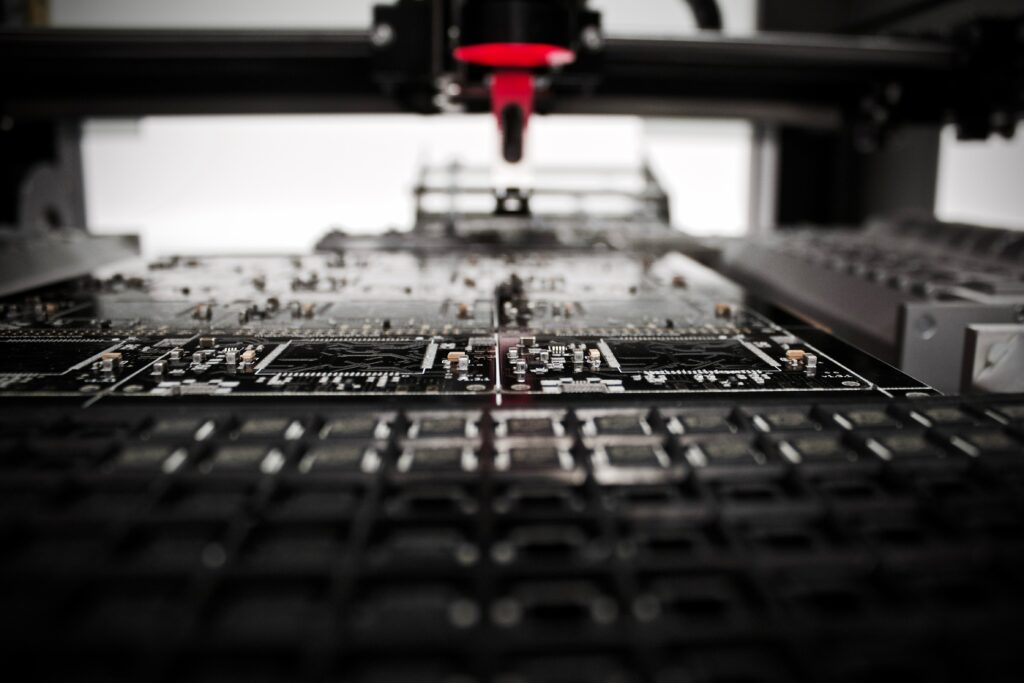Smart Factory หรือ Industry 4.0 คืออะไร ?

Smart Factory / Industry 4.0 เป็นแนวคิดที่เกี่ยวกับ การนำ Network + Sensor + Machine learning technology มาใช้กับโรงงานอุตสาหกรรม Sensor technology มีการพัฒนาไปมาก และราคาก็ถูกลงไปมาก การเชื่อมต่อข้อมูลกับเครื่องจักร ( Machine interface ) ที่ใช้ในอุตสาหกรรม ส่งข้อมูลผ่าน network ( ทั้งในรูปแบบ local network หรือ internet )
เมื่อเราสามารถเข้าถึงข้อมูลที่ส่งมาจากเครื่องจักร ข้อมูลเหล่านี้ต้องถูกจัดเก็บในโครงสร้างข้อมูล ( data structure ) ที่สามารถประมวลผลได้ง่าย
Machine Learning ( ML ) technology เข้ามามีบทบาทในโรงงานอุตสาหกรรม ในหลายรูปแบบเช่น ทำนายการเกิดปัญหาล่วงหน้าจากรูปแบบของข้อมูล , แนะนำวิธีการแก้ปัญหาที่สามารถนำไปปฏิบัติได้, แจ้งเตือนข้อมูลที่มีความสำคัญต่อการตัดสินใจ แต่สิ่งที่ต้องทำความเข้าใจคือ ML ไม่ได้มาทำงานแทนคนทั้งหมด แต่ ML เปรียบเสมือนผู้ช่วยของคนทำงาน ที่ช่วยคน ให้สามารถทำงานได้มีประสิทธิภาพสูงขึ้น ตัดสินใจผิดพลาดน้อยลง ช่วยลดความเครียดในการวิเคราะห์ข้อมูลที่มีจำนวนมากขึ้นทุกวัน
ความสามารถในการเข้าถึงข้อมูลของครื่องจักรได้ตลอดเวลา ไม่ว่าจะเป็นสถานะ ( status ) ของชิ้นส่วนต่างๆ ในเครื่องจักร เราจะสามารถวางแผนการซ่อมบำรุงรักษาระบบ ( system maintenance ) ได้ดีขึ้นกว่าเดิม และช่วยลดความเสียหายที่มีค่าใช้จ่ายสูง ช่วยให้ต้นทุนของโรงงานน้อยลง แต่สิ่งที่สำคัญที่สุดคือความปลอดภัยของพนักงานในโรงงาน
ถ้าเครื่องจักรในโรงงานอยู่ในสภาพพร้อมใช้งานตลอดเวลา จะทำให้งานในสายการผลิตสามารถทำงานต่อเนื่องและมีประสิทธิภาพสูงขึ้น ชิ้นงานเสีย ( defects ) จะลดน้อยลง จึงทำให้ต้นทุนในส่วนนี้ต่ำลง และเพิ่มความน่าเชื่อถือของโรงงานอีกด้วย
Get in Touch with us
Related Posts
- Temporal × 本地大模型 × Robot Framework 面向中国企业的可靠业务自动化架构实践
- Building Reliable Office Automation with Temporal, Local LLMs, and Robot Framework
- RPA + AI: 为什么没有“智能”的自动化一定失败, 而没有“治理”的智能同样不可落地
- RPA + AI: Why Automation Fails Without Intelligence — and Intelligence Fails Without Control
- Simulating Border Conflict and Proxy War
- 先解决“检索与访问”问题 重塑高校图书馆战略价值的最快路径
- Fix Discovery & Access First: The Fastest Way to Restore the University Library’s Strategic Value
- 我们正在开发一个连接工厂与再生资源企业的废料交易平台
- We’re Building a Better Way for Factories and Recyclers to Trade Scrap
- 如何使用 Python 开发 MES(制造执行系统) —— 面向中国制造企业的实用指南
- How to Develop a Manufacturing Execution System (MES) with Python
- MES、ERP 与 SCADA 的区别与边界 —— 制造业系统角色与连接关系详解
- MES vs ERP vs SCADA: Roles and Boundaries Explained
- 为什么学习软件开发如此“痛苦” ——以及真正有效的解决方法
- Why Learning Software Development Feels So Painful — and How to Fix It
- 企业最终会选择哪种 AI:GPT 风格,还是 Gemini 风格?
- What Enterprises Will Choose: GPT-Style AI or Gemini-Style AI?
- GPT-5.2 在哪些真实业务场景中明显优于 GPT-5.1
- Top Real-World Use Cases Where GPT-5.2 Shines Over GPT-5.1
- ChatGPT 5.2 与 5.1 的区别 —— 用通俗类比来理解














